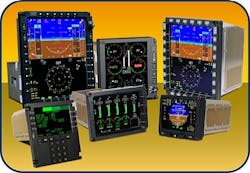Creeping system complexity drives growing use of EDA tools for aerospace and defense electronics
“As the amount of custom hardware is increasing, the need for and use of EDA tools is increasing as well to ensure that the hardware designs are completed in a timely and cost-effective manner,” Friedman continues. “Take, for example, a modern communications program, such as the Joint Tactical Radio System (JTRS). There are a number of waveforms that the system must be capable of transmitting and receiving with a significant variation in the form factor for the transceivers. To create, test, and deploy these types of systems, engineers are turning to modern EDA tools that focus on creating and testing models and prototypes before final hardware implementations to save time and money.”
Friedman says tools from The MathWorks, such as MATLAB and Simulink, help engineers develop modern electronic systems more effectively by enabling them to explore more of the algorithm design options and performance tradeoffs within a modeling environment, rather than in prototype hardware.
For example, he says, engineers may want to understand the influence of a lower-power component within a design. “Traditionally, components were specified based on a budget of worst case performance stack up that could be tolerated by the system. Using executable models and simulations, engineers can refine their designs by assessing the impact of a design change at the system level, resulting in potential weight and cost savings while delivering higher-quality results.”
Perhaps no EDA application is stronger than in the design of radar and communications systems, where high-performance systems are critical to mission success, Cutler says. “Agilent EEsof EDA is seeing an increase in adoption because of the performance gain and cost reduction that are achieved when advanced tools are applied to challenging design problems.” Another example is in the area of signal intelligence, particularly the need to detect and jam IEDs, where high-performance tuned receivers and sophisticated signal processing are needed to intercept and eliminate threats. “Designing such equipment cannot be done with point-tool methods and requires analysis software that combines radio-frequency (RF) analysis with baseband digital signal processing (DSP). There is simply no other way.”
Agilent EEsof EDA supplies electronic design automation software for microwave, RF, high-frequency, high-speed digital, RF system, electronic system level, circuit, 3D electromagnetic, physical design, and device-modeling applications. Agilent EEsof EDA radar and communications product design software enables designers to optimize and trade-off between DSP and RF in applications such as pre-distortion or equalization, says Cutler. “Predictive co-design results in higher performance systems than can be achieved using point tools.”
EDA software tools are increasingly being employed for myriad military and aerospace applications, and resulting in reduced time to market, cost and time savings, and effectively tested and verified electronics systems. Visit the technology firms listed to learn more about EDA software and its applications and benefits.
EDA company list
Agilent Technologies
Santa Clara, Calif.
408-345-8886
www.agilent.com
Aldec
Henderson, Nev.
702-990-4400
www.aldec.com
Altera Corp.
San Jose, Calif.
408-544-7000
www.altera.com
Atego
San Diego
888-912-8346
www.atego.com
Autodesk Inc.
San Rafael, Calif.
800-538-6401
www.autodesk.com
BittWare Inc.
Concord, N.H.
603-226-0404
www.bittware.com
Cadence
San Jose, Calif.
408-943-1234
www.cadence.com
Magma Design Automation
San Jose, Calif.
408-565-7500
www.magma-da.com
The MathWorks
Natick, Mass.
508-647-7001
www.mathworks.com
Mentor Graphics
Wilsonville, Ore.
503-685-7000
www.mentor.com
Synopsys Inc.
Mountain View, Calif.
650-584-5000
www.synopsys.com
Vector CANtech Inc.
Novi, Mich.
248-449-9290
www.vector.com
Zuken Inc.
Westford, Mass.
978-692-4900
www.zuken.com

